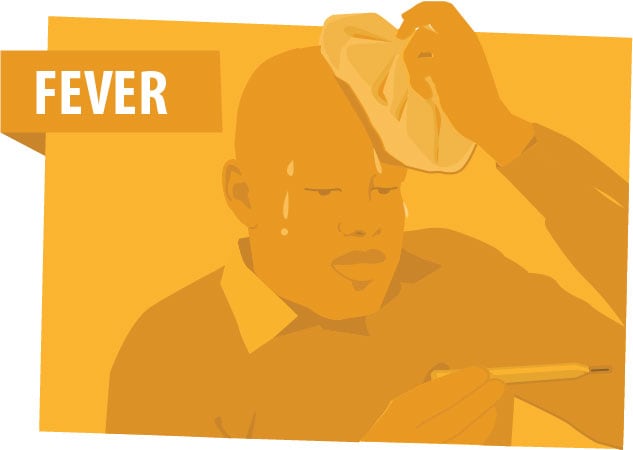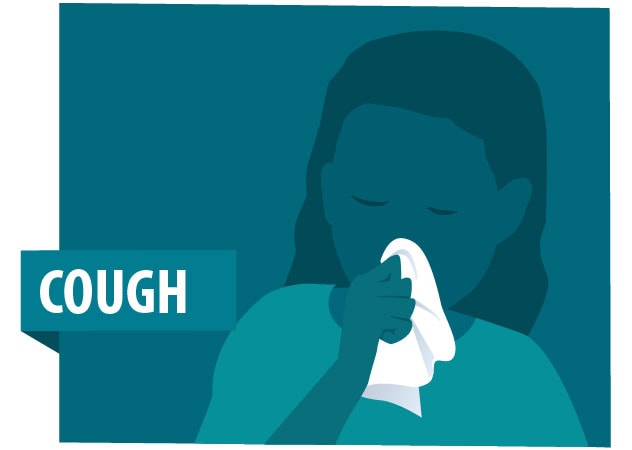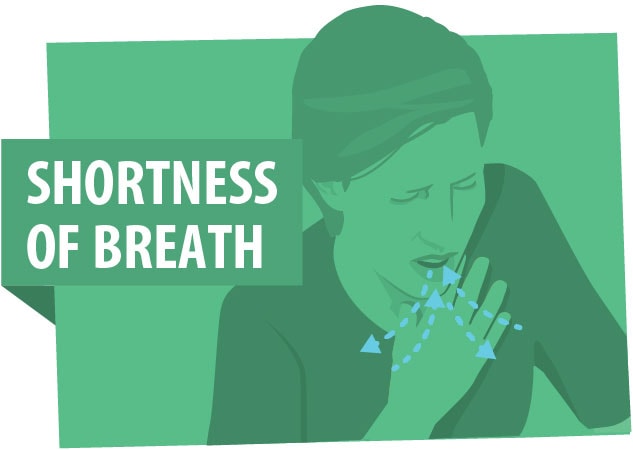Symptoms
Call your doctor: If you think you have been exposed to COVID-19 and develop a fever and symptoms, such as cough or difficulty breathing, call your healthcare provider for medical advice.
Watch for symptoms
Reported illnesses have ranged from mild symptoms to severe illness and death for confirmed coronavirus disease 2019 (COVID-19) cases.
The following symptoms may appear 2-14 days after exposure.*
- Fever
- Cough
- Shortness of breath
*This is based on what has been seen previously as the incubation period of MERS-CoV viruses.



If you develop emergency warning signs for COVID-19 get medical attention immediately. Emergency warning signs include*:
- Difficulty breathing or shortness of breath
- Persistent pain or pressure in the chest
- New confusion or inability to arouse
- Bluish lips or face
*This list is not all inclusive. Please consult your medical provider for any other symptoms that are severe or concerning.
Reducing Stigma
Public health emergencies, such as the outbreak of coronavirus disease 2019 (COVID-19), are stressful times for people and communities. Fear and anxiety about a disease can lead to social stigma (1) toward people, places, or things. For example, stigma and discrimination can occur when people associate a disease, such as COVID-19, with a population or nationality, even though not everyone in that population or from that region is specifically at risk for the disease. Stigma can also occur after a person has been released from COVID-19 quarantine even though they are not considered a risk for spreading the virus to others.
It is important to remember that people – including those of Asian descent – who do not live in or have not recently been in an area of ongoing spread of the virus that causes COVID-19, or have not been in contact with a person who is a confirmed or suspected case of COVID-19 are not at greater risk of spreading COVID-19 than other Americans.
Some groups of people who may be experiencing stigma because of COVID-19 include:
- Persons of Asian descent
- People who have traveled
- Emergency responders or healthcare professionals
Stigma hurts everyone by creating fear or anger towards other people.
Stigmatized groups may be subjected to:
- Social avoidance or rejection
- Denials of healthcare, education, housing or employment
- Physical violence.
Stigma affects the emotional or mental health (2) of stigmatized groups and the communities they live in. Stopping stigma is important to making communities and community members resilient (3). See resources on mental health and coping during COVID-19.
Everyone can help stop stigma related to COVID-19 by knowing the facts and sharing them with others in your community.
Communicators and public health officials can help counter stigma during the COVID-19 response.
- Maintain privacy and confidentiality of those seeking healthcare and those who may be part of any contact investigation.
- Quickly communicate the risk or lack of risk from associations with products, people, and places.
- Raise awareness about COVID-19 without increasing fear.
- Share accurate information about how the virus spreads.
- Speak out against negative behaviors, including negative statements on social media about groups of people, or exclusion of people who pose no risk from regular activities.
- Be cautious about the images that are shared. Make sure they do not reinforce stereotypes.
- Engage with stigmatized groups in person and through media channels including news media and social media.
- Thank healthcare workers and responders. People who have traveled to areas where the COVID-19 outbreak is happening to help have performed a valuable service to everyone by helping make sure this disease does not spread further.
- Share the need for social support for people who have returned from China or are worried about friends or relatives in the affected region.
Key Terms
- Stigma occurs when people associate a risk with a specific people, place, or thing – like a minority population group – and there is no evidence that the risk is greater in that group than in the general population. Stigmatization is especially common in disease outbreaks. (https://emergency.cdc.gov/cerc/cerccorner/article_123016.asp)
- Mental health is defined by the World Health Organization as a state of well being in which a person realizes his or her own abilities, can cope with normal stresses of life, can work productively and fruitfully, and is able to make a contribution to his or her community (https://www.who.int/news-room/fact-sheets/detail/mental-health-strengthening-our-response).
- Resilience is the ability to withstand and recover from stress. (https://blogs.cdc.gov/publichealthmatters/2017/08/predicting-community-resilience-and-recovery-after-a-disaster/)
Other Preparedness Resources
Note: All information and image/s are credited to the original writer's source/s and reference/s.
Please click the link/s for complete information.
The information contained on this site is for educational purposes only and
should not be taken as expert advice.
No comments:
Post a Comment
Note: Only a member of this blog may post a comment.